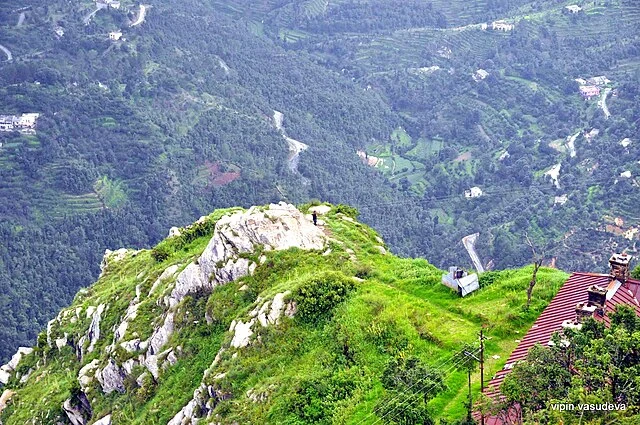
Top 10 Solo Travel Destinations in India for Adventurers
October 8, 2024
List of Visa-Free Countries for Indian Citizens: A Complete Guide
April 9, 2025Mukteshwar vs. Nainital: Which is the Better Hill Station?
Nestled in the Kumaon region of Uttarakhand, India, Mukteshwar and Nainital are two enchanting hill stations that attract travelers seeking respite from urban chaos. While both destinations offer breathtaking Himalayan views, serene landscapes, and a cool climate, they cater to different preferences.
Nainital, a bustling lakeside retreat, is a well-known tourist hub, while Mukteshwar, a quieter hamlet, promises solitude and unspoiled nature. This article delves into a detailed comparison of Mukteshwar and Nainital, exploring their scenery, attractions, accessibility, activities, and overall vibe to determine which hill station might be the better choice for your next getaway.
Overview of Nainital
Nainital, often dubbed the “Lake District of India,” sits at an elevation of 2,084 meters (6,837 feet) above sea level. Its centerpiece, Naini Lake, a pear-shaped body of water surrounded by seven hills, gives the town its name and charm. Historically, Nainital served as a summer retreat for British colonial officials, leaving behind a legacy of colonial architecture and a vibrant tourism culture. Today, it’s one of Uttarakhand’s most popular destinations, drawing crowds year-round for its scenic beauty and lively atmosphere.
The town’s Mall Road buzzes with shops, restaurants, and hotels, while attractions like Naina Devi Temple, Tiffin Top, and the Nainital Zoo add to its appeal. Boating on Naini Lake is a quintessential experience, offering stunning reflections of the surrounding peaks. With a population of over 40,000 and excellent connectivity, Nainital feels like a small city with a hill station soul.
Read More- Best Places to Visit in April in India in 2025: A Detailed Guide
Overview of Mukteshwar
Mukteshwar, perched at 2,171 meters (7,123 feet), lies about 50 kilometers northeast of Nainital. This tranquil hill station is named after the 350-year-old Mukteshwar Dham, a temple dedicated to Lord Shiva, which offers panoramic views of the Himalayas, including the majestic Nanda Devi peak. Unlike Nainital, Mukteshwar remains a hidden gem, with a sparse population and minimal commercialization. Its rolling meadows, dense forests of oak and rhododendron, and fruit orchards create a pristine, untouched environment.
Mukteshwar’s colonial past is evident in landmarks like the Indian Veterinary Research Institute (IVRI), established by the British, but its appeal lies in its quietude. Adventure enthusiasts flock here for rock climbing, rappelling, and trekking, while nature lovers revel in its birdwatching opportunities and serene trails. It’s a place where you can hear the wind rustle through the trees and feel far removed from the world below.
Scenery and Natural Beauty
Nainital’s natural beauty revolves around its lakes—Naini Lake, Bhimtal, and Naukuchiatal are all within reach—framed by lush hills. The town offers postcard-perfect vistas, especially at sunrise or sunset when the water mirrors the sky and peaks like Naina Peak and Snow View Point provide sweeping panoramas. However, its popularity means that these views often come with crowds, and the lakefront can feel busy, especially during peak seasons like summer and winter holidays.
Mukteshwar, by contrast, offers a raw, unfiltered connection to nature. Its vantage points, such as Chauli ki Jali and the temple ridge, provide unobstructed 180-degree views of snow-capped Himalayan giants—Trishul, Nanda Devi, and Panchachuli—often under clear, unpolluted skies. The surrounding forests and orchards, laden with apples, plums, and apricots, add a rustic charm. While it lacks a lake, Mukteshwar compensates with hidden gems like Bhalu Gaad Waterfall and serene trails that feel worlds away from civilization.
Verdict: Nainital wins for lake-centric beauty and accessibility to multiple viewpoints, but Mukteshwar takes the edge for pristine, crowd-free landscapes and Himalayan vistas.
Reference- Places to Visit in Nainital
Attractions and Activities
Nainital is a hub of activity. Boating, horse riding, and cable car rides to Snow View Point are staples, while landmarks like Raj Bhawan and St. John’s Church offer historical intrigue. The Nainital Zoo, home to Himalayan wildlife like snow leopards and bears, is a hit with families. Nearby, Bhimtal (22 km) and Sattal (23 km) provide quieter lake experiences, though they’re still tied to Nainital’s tourist circuit. Shopping on Mall Road for candles, woolens, and local jams adds a lively dimension.
Mukteshwar caters to a different crowd. The Mukteshwar Temple, perched atop a cliff, blends spirituality with stunning views. Chauli ki Jali, a rocky outcrop nearby, is a hotspot for adventure sports like rock climbing and rappelling, drawing thrill-seekers. Trekking routes to Peora or Almora, camping under starry skies, and exploring the IVRI campus offer a mix of adventure and heritage. The slower pace encourages relaxation—think sipping tea amid orchards or stargazing at the Starscapes Observatory.
Verdict: Nainital excels for variety and family-friendly options; Mukteshwar shines for adventure and solitude.
Image credit- Mukteshwar
Accessibility and Infrastructure
Nainital’s proximity to Delhi (324 km, about 7–8 hours by road) and excellent connectivity make it a convenient choice. The nearest railway station, Kathgodam (34 km), links it to major cities like Delhi and Lucknow, while Pantnagar Airport (70 km) serves domestic flights. Buses and taxis are plentiful, and the town’s infrastructure—hotels, guesthouses, restaurants, and ATMs—caters to all budgets. However, this accessibility fuels overcrowding, especially in peak seasons.
Mukteshwar is farther from Delhi (358 km, about 8–9 hours) and less connected. Kathgodam (58 km) remains the closest railhead, and Pantnagar Airport (91 km) is the nearest air link. The final stretch involves winding roads, best navigated by private car or taxi, as public transport is limited. Accommodations range from budget homestays to luxury resorts like JuSta Mukteshwar, but options are fewer than in Nainital. Dining is simpler, with local eateries and resort restaurants dominating over commercial chains.
Verdict: Nainital is the clear winner for ease of access and robust infrastructure; Mukteshwar requires more planning but rewards with seclusion.
Read More- Top 10 Solo Travel Destinations in India for Adventurers
Climate and Best Time to Visit
Both hill stations enjoy pleasant summers (March–June), with temperatures between 10°C and 25°C, making them ideal escapes from the plains. Nainital’s monsoons (July–September) bring heavy rain, occasionally disrupting travel, while Mukteshwar’s higher altitude keeps it slightly drier and more navigable. Winter (October–February) sees Nainital drop to 0°C–15°C, with occasional snow, while Mukteshwar, colder at -2°C–12°C, often blankets in heavier snowfall, especially December to February.
Nainital’s year-round appeal suits spontaneous trips, though summer and winter are busiest. Mukteshwar’s charm peaks in autumn (September–November) for clear Himalayan views and winter for snow enthusiasts, with fewer crowds across seasons.
Verdict: Nainital offers flexibility; Mukteshwar’s seasonal allure favors specific visits.
Crowd and Ambiance
Nainital’s popularity is a double-edged sword. Its vibrant energy suits social travelers, families, and those who enjoy a bustling hill station vibe, but it can feel chaotic, with traffic jams and crowded viewpoints. Mukteshwar, with its sparse tourist footprint, exudes peace. It’s perfect for introverts, couples, or anyone craving a quiet retreat, though it lacks the lively buzz some seek.
Verdict: Nainital for sociability; Mukteshwar for serenity.
Which is Better?
The “better” hill station depends on your priorities. Nainital is ideal if you crave a well-rounded experience—lakes, activities, shopping, and easy access. It’s a classic hill station with something for everyone, though you’ll share it with many others. Mukteshwar suits those who value tranquility, adventure, and raw nature over convenience. Its offbeat charm and stunning Himalayan proximity make it a haven for the soul, albeit with less infrastructure.
For families or first-time hill station visitors, Nainital’s vibrancy and facilities win. For nature lovers, adventurers, or those escaping the grind, Mukteshwar’s quiet allure is unmatched. Why choose? A weekend split—two days in Nainital’s bustle, two in Mukteshwar’s calm—might just be the perfect Kumaon escape.
1st Image credit- Nainital





